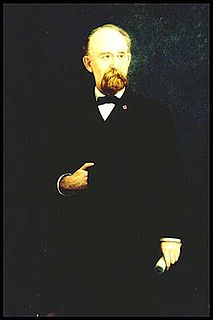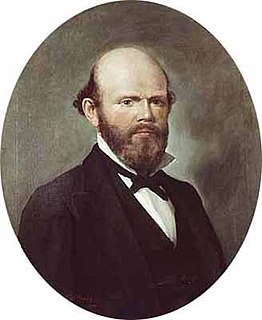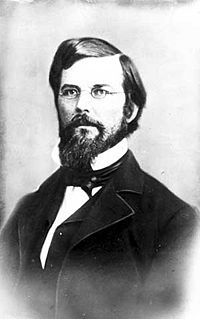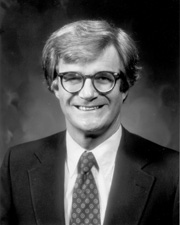It has been requested that the title of this article be changed to List of governors of Minnesota . Please see the relevant discussion on the discussion page. The page should not be moved unless the discussion is closed; summarizing the consensus achieved in support of the move. |
| Party | Governors |
|---|---|
| Republican/Independent-Republican | 26 |
| Democratic-Farmer-Labor | 7 |
| Democratic | 4 |
| Farmer-Labor | 3 |
| Reform/Independence | 1 |
The following is a list of Governors of the State of Minnesota and Minnesota Territory, United States. The officeholder, who serves as head of the executive branch of the Government of Minnesota and is charged with ensuring the faithful execution of the state's laws, [a] is empowered to name state commissioners and department heads and to approve or veto bills passed by the Minnesota Legislature. [b] The Governor of Minnesota also serves as commander-in-chief of the Minnesota National Guard.

In the United States, a governor serves as the chief executive officer and commander-in-chief in each of the fifty states and in the five permanently inhabited territories, functioning as both head of state and head of government therein. As such, governors are responsible for implementing state laws and overseeing the operation of the state executive branch. As state leaders, governors advance and pursue new and revised policies and programs using a variety of tools, among them executive orders, executive budgets, and legislative proposals and vetoes. Governors carry out their management and leadership responsibilities and objectives with the support and assistance of department and agency heads, many of whom they are empowered to appoint. A majority of governors have the authority to appoint state court judges as well, in most cases from a list of names submitted by a nominations committee.

Minnesota is a state in the Upper Midwest, Great Lakes, and northern regions of the United States. Minnesota was admitted as the 32nd U.S. state on May 11, 1858, created from the eastern half of the Minnesota Territory. The state has a large number of lakes, and is known by the slogan the "Land of 10,000 Lakes". Its official motto is L'Étoile du Nord.

The Territory of Minnesota was an organized incorporated territory of the United States that existed from March 3, 1849, until May 11, 1858, when the eastern portion of the territory was admitted to the Union as the State of Minnesota.
Contents
- Territorial governors
- State governors
- Notes
- Notes on Minnesota political party names
- Other high offices held
- Living former governors of Minnesota
- See also
- References
Henry H. Sibley was elected the first governor in a statewide election held on October 13, 1857 and took office following Minnesota's entry into the Union as the 32nd state on May 11, 1858. [c] At the time, the governor and lieutenant governor were elected on separate ballots to terms lasting two years. Prior to 1886, statewide elections were held on odd years. Because of this change (the result of an 1883 state constitutional amendment), Lucius F. Hubbard's second term as governor lasted three years. With the passage of a 1958 state constitutional amendment, the terms of governor and lieutenant governor increased to four-years in 1963. [b] A 1972 state constitutional amendment provided for the joint election of the governor and lieutenant governor starting in 1974.

Henry Hastings Sibley was the first Governor of the U.S. state of Minnesota and a U.S. Representative of the Minnesota Territory and the Wisconsin Territory.

Lucius Frederick Hubbard was an American politician. The Republican served as the ninth Governor of Minnesota from January 10, 1882 to January 5, 1887. He also served as an officer in the Union Army during the American Civil War.
The numerals indicate the consecutive time in office served by a single person. For example, William R. Marshall served two consecutive terms and is counted as the fifth state governor (not the fifth and sixth). Henry A. Swift assumed the governorship after the resignation of Alexander Ramsey, serving out the remainder of what would have been Ramsey's second term. The fact that Swift was not voted into office does not affect the numbering, which makes him the 3rd governor. Rudy Perpich served two non-consecutive terms and is counted chronologically as both the 34th and the 36th governor. Because of this, the list below contains 40 governorships, but only 39 people.

Willian Rainey Marshall was an American politician. He was the fifth Governor of Minnesota from January 8, 1866 to January 9, 1870 and was a member of the Republican party. He served as an officer in the 7th Minnesota Volunteer Infantry Regiment during the American Civil War (1861–1865).

Henry Adoniram Swift was an American politician who was the third Governor of Minnesota. He served as governor from July 10, 1863 to January 11, 1864 after serving as the third Lieutenant Governor of Minnesota when Governor Alexander Ramsey resigned to enter the United States Congress. Prior to that he had served in the Minnesota Senate. Swift was a Republican.

Alexander Ramsey was an American politician. He served as a Whig and Republican over a variety of offices between the 1840s and the 1880s. He was the first Minnesota and Wisconsin Territorial Governor.
Prior to its organization as a territory, portions of Minnesota were part of the Northwest Territory, Indiana Territory, Louisiana Territory (later renamed Missouri Territory), Illinois Territory, Michigan Territory, Wisconsin Territory, and Iowa Territory; see the lists of governors of Ohio, Indiana, Missouri, Illinois, Michigan, Wisconsin, and Iowa for this period.

The Northwest Territory in the United States was formed after the American Revolutionary War, and was known formally as the Territory Northwest of the River Ohio. It was the initial post-colonial Territory of the United States and encompassed most of pre-war British colonial territory west of the Appalachian mountains north of the Ohio River. It included all the land west of Pennsylvania, northwest of the Ohio River and east of the Mississippi River below the Great Lakes. It spanned all or large parts of six eventual U.S. States. It was created as a Territory by the Northwest Ordinance July 13, 1787, reduced to Ohio, eastern Michigan and a sliver of southeastern Indiana with the formation of Indiana Territory July 4, 1800, and ceased to exist March 1, 1803, when the southeastern portion of the territory was admitted to the Union as the state of Ohio, and the remainder attached to Indiana Territory.

The Indiana Territory was created by a congressional act that President John Adams signed into law on May 7, 1800, to form an organized incorporated territory of the United States that existed from July 4, 1800, to December 11, 1816, when the remaining southern portion of the territory was admitted to the Union as the state of Indiana. The territory originally contained approximately 259,824 square miles (672,940 km2) of land, but its size was decreased when it was subdivided to create the Michigan Territory (1805) and the Illinois Territory (1809). The Indiana Territory was the first new territory created from lands of the Northwest Territory, which had been organized under the terms of the Northwest Ordinance of 1787.

The Territory of Louisiana or Louisiana Territory was an organized incorporated territory of the United States that existed from July 4, 1805, until June 4, 1812, when it was renamed the Missouri Territory.
Four governors were born outside the United States: Knute Nelson was born in Norway, John Lind and Adolph Olson Eberhart were both born in Sweden, and Hjalmar Petersen was born in Denmark. Sixteen of the forty-one governors to date were actually born in Minnesota. Five governors have resigned from office, and three have died in office.

Knute Nelson was an American attorney and politician active in both Wisconsin and Minnesota. A Republican, he served in state and national positions: he was elected to the Wisconsin and Minnesota legislatures, was elected to the U.S. House of Representatives and the United States Senate from Minnesota, and he served as the 12th Governor of Minnesota.

John Lind was an American politician. Lind played an important role in the Mexican Revolution as President Woodrow Wilson's personal envoy.

Adolph Olson Eberhart was an American politician, who served as the 17th Governor of Minnesota.



















































